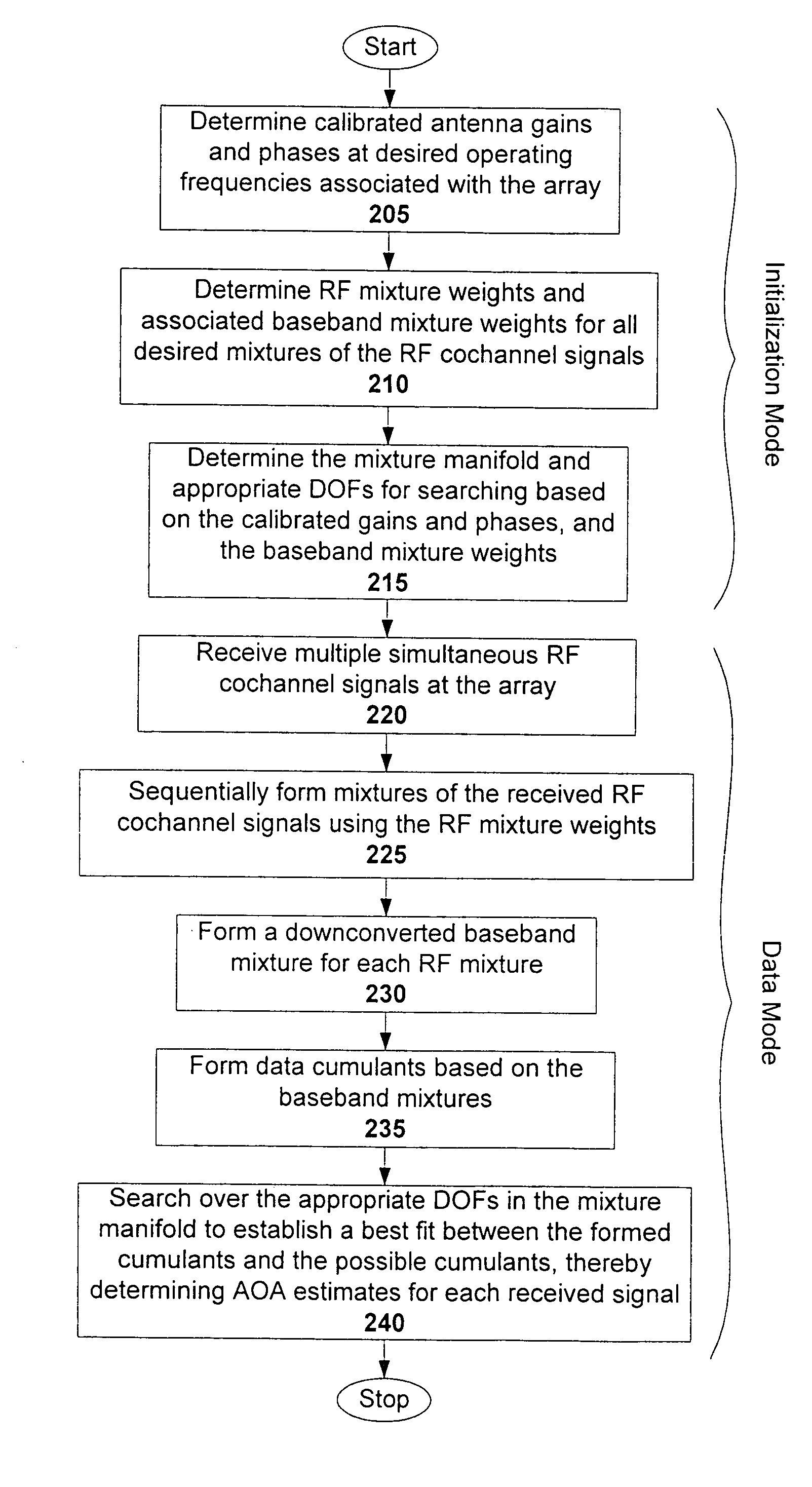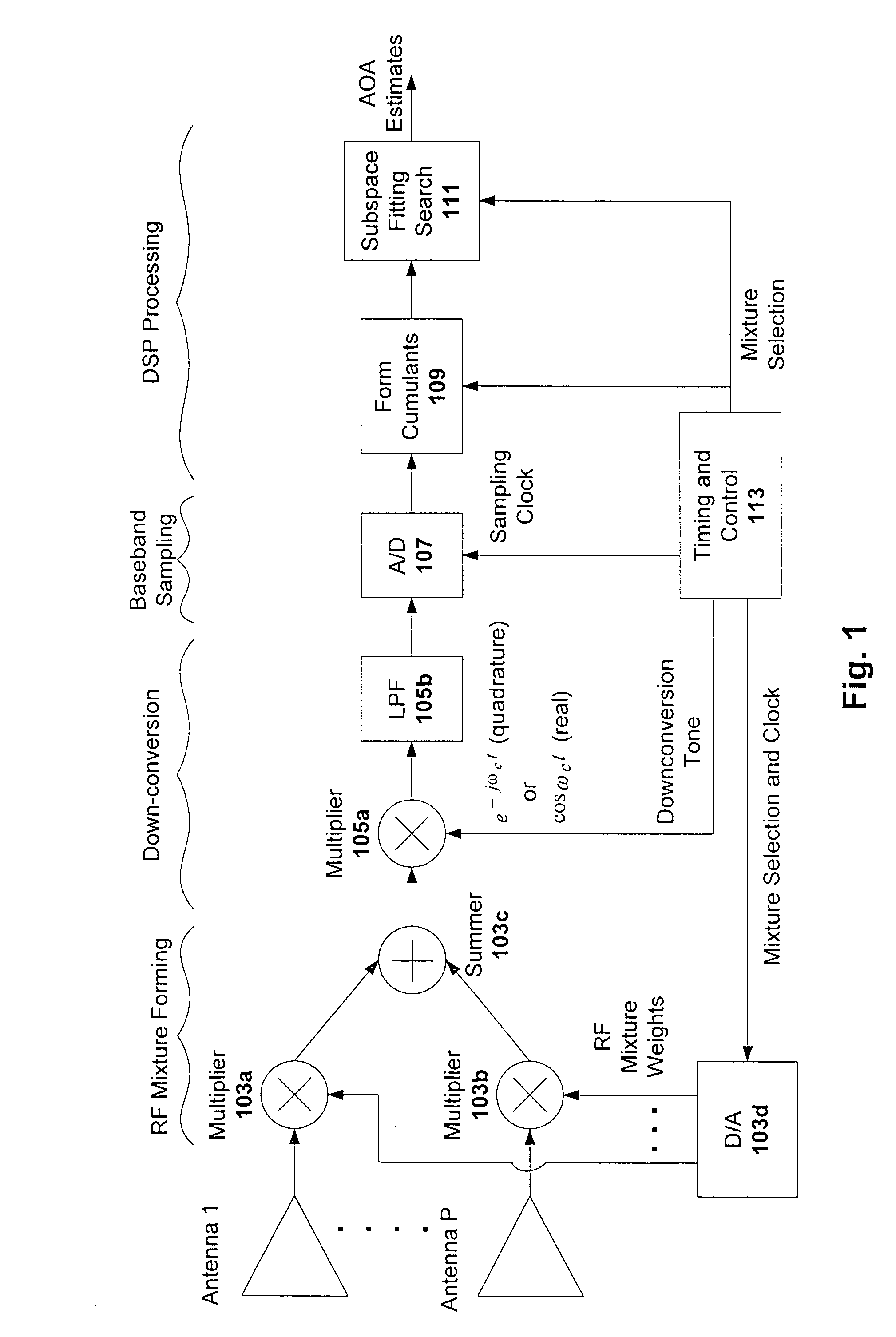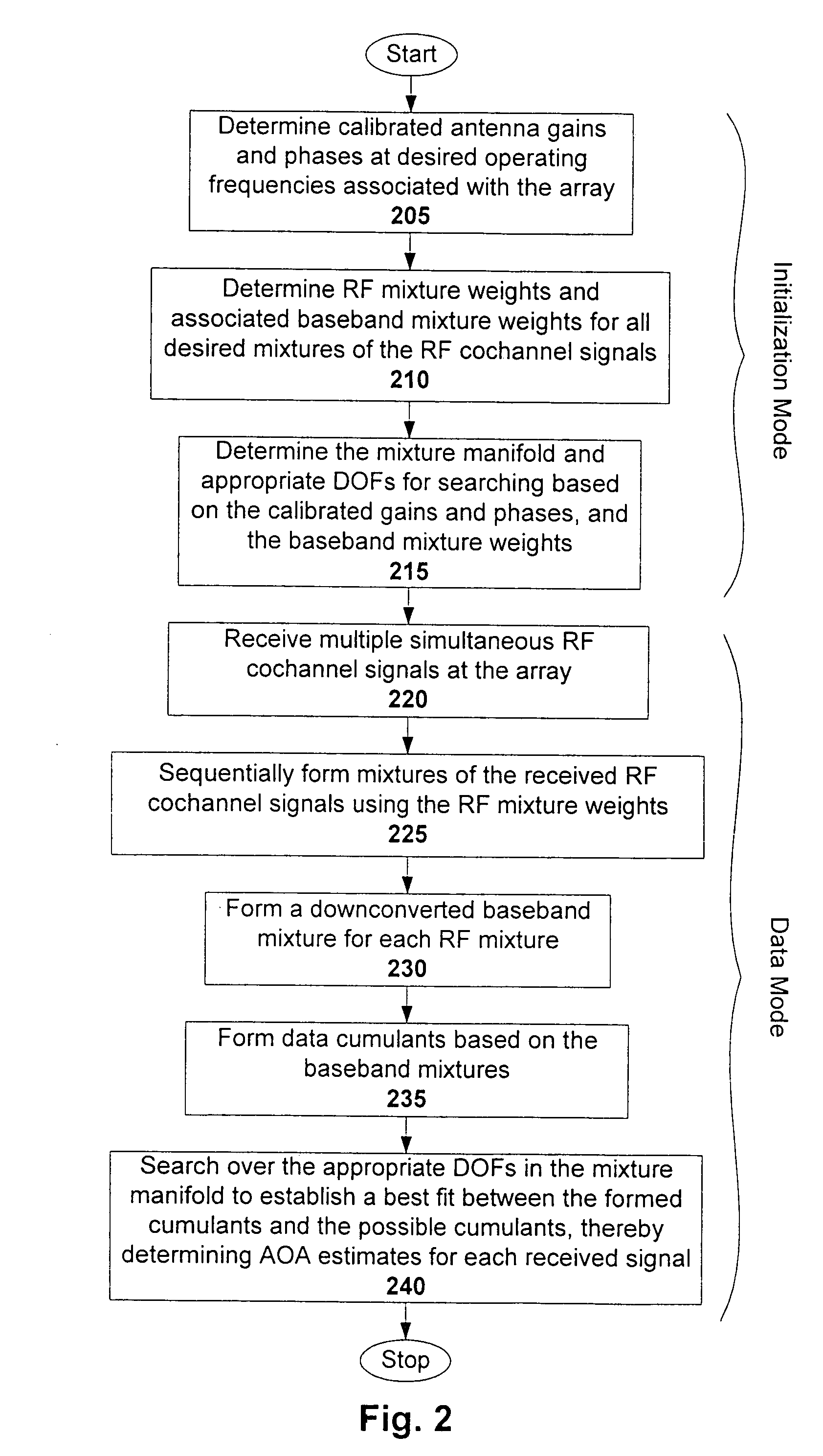Direction-finding for multiple cochannel sources
a technology of cochannel source and direction finding, applied in direction finders using radio waves, multi-channel direction-finding systems using radio waves, instruments, etc., can solve the problems of single source location, high system complexity, and high computational cost, and achieve the effect of reducing search range and saving computational cos
- Summary
- Abstract
- Description
- Claims
- Application Information
AI Technical Summary
Benefits of technology
Problems solved by technology
Method used
Image
Examples
Embodiment Construction
[0017]Embodiments of the present invention combine analog and digital signal processing to provide a cost effective alternative to prior radio frequency direction-finding approaches, by reducing the amount of downconversion hardware, and eliminating the requirement for phase coherent sampling, while at the same time allowing for several cochannel simultaneously transmitting sources. A number of identified conditions are exploited to achieve this result. In particular, it has been recognized that multiple source AOAs are encoded in the analog mixtures in a way that does not depend on simultaneity of sampling. Further, this information can be extracted through well-established higher order statistical approaches and general purpose multiple parameter function optimization techniques.
[0018]More specifically, a set of simultaneous non-linear equations that are functions of the mixtures are approximately solved, using any general purpose optimization methods. This technique differs from ...
PUM
 Login to View More
Login to View More Abstract
Description
Claims
Application Information
 Login to View More
Login to View More - R&D
- Intellectual Property
- Life Sciences
- Materials
- Tech Scout
- Unparalleled Data Quality
- Higher Quality Content
- 60% Fewer Hallucinations
Browse by: Latest US Patents, China's latest patents, Technical Efficacy Thesaurus, Application Domain, Technology Topic, Popular Technical Reports.
© 2025 PatSnap. All rights reserved.Legal|Privacy policy|Modern Slavery Act Transparency Statement|Sitemap|About US| Contact US: help@patsnap.com



